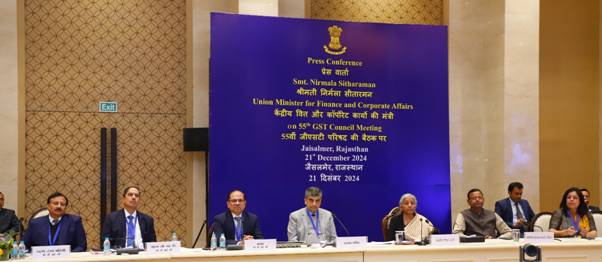The Modi government has approved a new pension scheme on Saturday called the Unified Pension Scheme (UPS), which will come into effect from April 1 2025.The opposition parties were queueing up to bring back the old pension scheme (OPS) which was replaced by new pension scheme (NPS) in 2004.The new pension scheme was based on defined contribution by employees and employers, which was to be invested in select funds and amount of pension were dependent on the returns on the investments.
Government says the Unified pension scheme has the advantages of the previous old pension scheme and features of the new pension scheme.
The UPS has provisions for a fixed pension amount, a guaranteed and predetermined sum of money that a retiree will receive regularly after retirement.
The UPS ensures that all central government employees who have served for 25 years or more, will receive 50 per cent of their last drawn salary from the past 12 months as pension. Additionally, those employees will also be eligible for post-retirement inflation-linked increments in their pension amount.
In April 2023, a committee led by then finance secretary T V Somanathan, has recommended for the Unified Pension scheme which was approved by Modi cabinet on Saturday.
Under the UPS there will be a provision of a fixed and assured pension, unlike the NPS which does not promise a fixed pension amount.
For those employees who have completed 25 years or more of service, UPS provides for them a pension amount of 50 per cent of their basic pay earned during the last 12 months preceding retirement. For employees with a minimum of 10 years of service will be eligible for pension but it will be adjusted proportionally with number of years of service, with a minimum amount of Rs 10,000 a month.
The retirement benefits also include assured family pension, equals to 60 per cent of the employee’s basic pay. This pension will be given in the event of an employee dying pre-maturely.
Inflation linked indexation benefit will also be applied on assured pension, assured family pension, and assured minimum pension.
UPS also provides for gratuity or a lump-sum amount on superannuation. The gratuity amount will be calculated as per the old formulae, as one tenth of the monthly emolument, pay plus dearness allowance as on retirement date and calculated on the basis of every six months of service.
The UPS also guarantees 6 per cent of the pension to be immediately transferred to the employee’s family as family pension, similar to the benefits offered by OPS.
Government says UPS five pillars which includes assured pension, assured family pension, assured minimum pension, inflation linked indexation, and gratuity on retirement
The NPS which was introduced in in January 2004, was initially established as a retirement plan exclusively for government employees, but in 2009, it was expanded to cover all sectors. NPS is governed jointly by government and the Pension Fund Regulatory Authority (PFRDA). NPS provides for pension along with investment growth. On retiring employees will have the option to withdraw a portion of their accumulated savings, while the remaining sum goes for monthly pension.
NPS allows employees to withdraw a maximum of 60 per cent of the total corpus upon reaching retirement age, and no taxes will be charged on the amount. The remaining 40 per cent is utilised to buy an annuity product, and returns on it will be given as pension every month to the subscribers.
But under the OPS pension given to central and state government employees were fixed at 50 percent of their last drawn basic pay, similar to the structure in the UPS. Also, a dearness allowance (DA) was included, to compensate for the rise in the cost of living which is also done in UPS.
Moreover, in OPS, employees were entitled to a gratuity payment of a maximum of Rs 20 lakh on retirement. In cases if a retired employee passes away, their family receives continued pension benefits. Also no deductions are made from an employee salary towards pensions contributions under OPS unlike NPS.
Government says the new unified pension scheme (UPS) offers a combination of benefits of both OPS and NPS. From the OPS, the UPS incorporates features such as an assured pension, inflation linked indexation, family pension, and a minimum pension.
From the NPS, UPS adopts a feature which allows that employees have the option to contribute towards their pension fund if they want a more personalized and higher pension upon retirement. Government under UPS has also increased its contribution from 14 per cent currently in NPS to 18.5 per cent under UPS, employee contribution will remain the same.
Visit www.cagurujiclasses.com for practical courses











